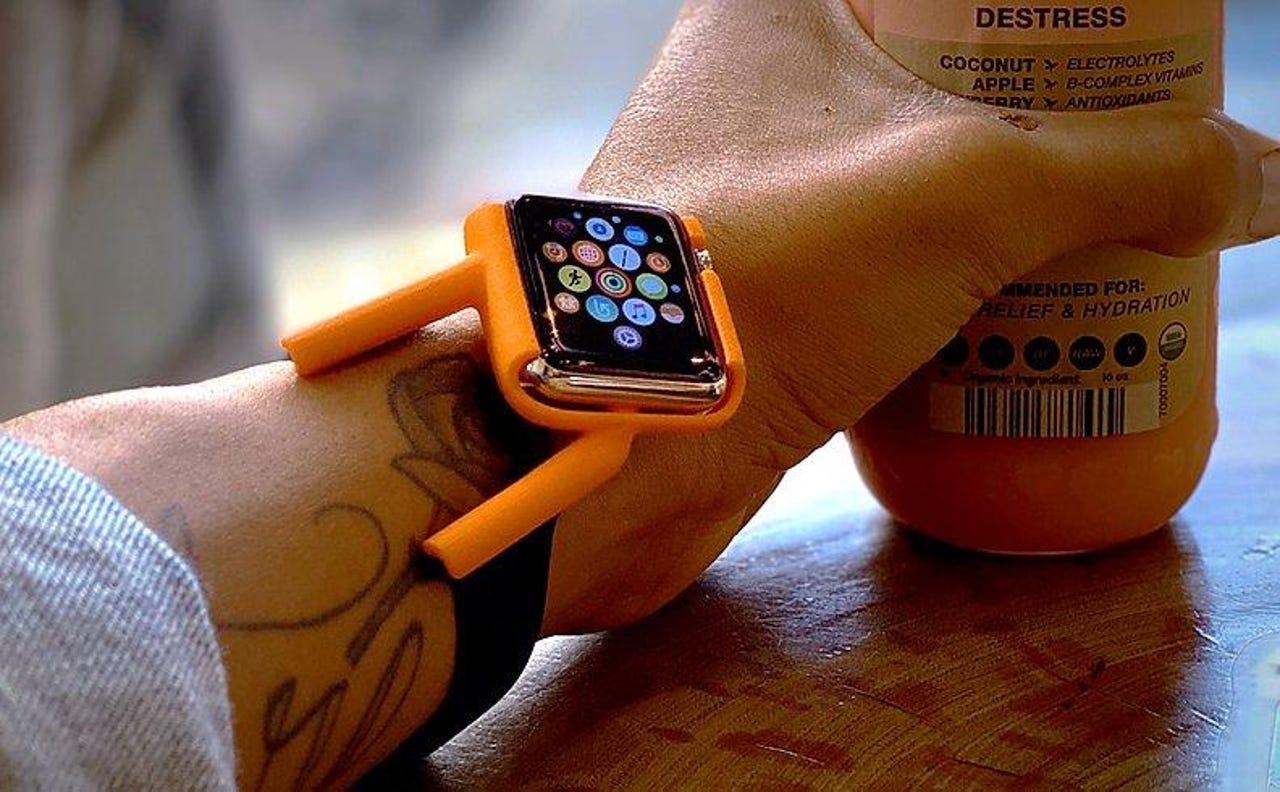Tilt Apple Watch band review: Off the wrist


Tilt Apple Watch band.
Every year CES reminds me that for every original idea, there are thousands of plainly derivative ones. Something truly original is as refreshing as it is unexpected. When I walked by the Tilt booth my "just another Apple Watch band" ennui turned to surprise when I realized I'd never seen anything like it.
Apple Watch
So what is it about the Tilt Watch band that is so original? Where it puts your Watch.
Instead of leaving your Apple Watch hiding under your shirt sleeve, Tilt places it at the base of your thumb. As I type this I can look at my Apple Watch without pulling back my sleeve or moving my arm.
Now, after a century of standard wrist watches - which became popular during WWI because the inconvenience of pocket watches in the trenches - why would you want to move your Watch from your wrist to the base of your thumb?
Because, if you're like me, telling time is one of the less common reasons to check your watch. Text messages, weather, heart rate, timers, email, and app notifications are flitting across your "watch" face.
With Tilt, a stealthy glance down and you're informed.
I liked the concept enough to ask the friendly Tilt folks for a review copy. They sent me one in international orange. Tilt bands are handed, so if you're giving one as a gift, make sure you know which arm they keep their Watch on.
Wear test
I installed my Series 4 Apple Watch in the Tilt watch holder and hooked in my knock-off Milanese Loop band. Easy. It took me a while to decide where best to place the Watch on my wrist, but once I did it performed as advertised.
Heart rate monitored worked as usual, which was my biggest concern going in. The lift to activate movement worked as well as ever. Haptics were fine.
I wore it for a week, and yes, I got quizzical looks and questions. Much of it was, I think, because of the international orange color. If I were buying one for myself, I'd go for black.
The biggest negative was that I had to re-enter my passcode once or twice a day. I guess that there were movements that pulled my hand far enough away to break the normal connection.
But the big test came when I stopped using it. Would I miss it?
To my surprise, not really. Having my watch face extra-handy isn't a big win for me, but it may be for you. As a writer and solo consultant, I work alone, with teleconferences and the occasional trade show, as my major interactive events.
But having worked in Silicon Valley, I know there are folks this will work for. If you want to stay plugged in, but not be super-obvious about it, this will definitely help.
The Storage Bits take
My big takeaway is that the Tilt folks are on to something. Tiny computer screens with continual information flows shouldn't be hidden.
Inventors and designers are grappling with this problem. Should the screen be in your eyeglasses? In a contact lens? Or somewhere on your hand or arm?
What I did conclude is that burying it under a sleeve is suboptimal. What is optimal remains to be seen, and may vary based on our individual work requirements and preferences.
Humans love convenience. Making small screens more convenient is a major design challenge.
Comments welcome. What is your biggest peeve with keeping the Watch on your wrist?